- Clone
- RMG1-1 (See other available formats)
- Regulatory Status
- RUO
- Other Names
- Immunoglobulin G1
- Isotype
- Rat IgG
- Ave. Rating
- Submit a Review
- Product Citations
- 15 publications
| Cat # | Size | Price | Save |
|---|---|---|---|
| 406603 | 50 µg | ¥18,260 | |
| 406604 | 500 µg | ¥45,320 |
The RMG1-1 monoclonal antibody reacts with immunoglobulin G1 (IgG1) in all tested mouse haplotype (Igh-a and b). It does not react with other isotypes. The RMG1-1 monoclonal antibody may be used as a primary or secondary reagent for ELISA or immunofluorescent analysis.
Product DetailsProduct Details
- Verified Reactivity
- Mouse
- Antibody Type
- Monoclonal
- Host Species
- Rat
- Immunogen
- Mouse Ig cocktail
- Formulation
- Phosphate-buffered solution, pH 7.2, containing 0.09% sodium azide.
- Preparation
- The antibody was purified by affinity chromatography, and conjugated with biotin under optimal conditions.
- Concentration
- 0.5 mg/ml
- Storage & Handling
- The antibody solution should be stored undiluted between 2°C and 8°C. Do not freeze.
- Application
-
ELISA - Quality tested
- Recommended Usage
-
Each lot of this antibody is quality control tested by ELISA. For ELISA detection, the suggested use of this reagent is ≤ 1.0 µg per ml. It's recommended that the reagent be titrated for optimal performance for each application.
-
Application References
(PubMed link indicates BioLegend citation) - Product Citations
-
- RRID
-
AB_315062 (BioLegend Cat. No. 406603)
AB_315063 (BioLegend Cat. No. 406604)
Related FAQs
- How many biotin molecules are per antibody structure?
- We don't routinely measure the number of biotins with our antibody products but the number of biotin molecules range from 3-6 molecules per antibody.
Other Formats
View All IgG1 Reagents Request Custom Conjugation| Description | Clone | Applications |
|---|---|---|
| PerCP/Cyanine5.5 anti-mouse IgG1 | RMG1-1 | FC |
| Purified anti-mouse IgG1 | RMG1-1 | ELISA,FC |
| Biotin anti-mouse IgG1 | RMG1-1 | ELISA,IHC-F |
| FITC anti-mouse IgG1 | RMG1-1 | FC |
| PE anti-mouse IgG1 | RMG1-1 | FC |
| APC anti-mouse IgG1 | RMG1-1 | FC |
| PE/Cyanine7 anti-mouse IgG1 | RMG1-1 | FC |
| Brilliant Violet 421™ anti-mouse IgG1 | RMG1-1 | FC |
| Alexa Fluor® 647 anti-mouse IgG1 | RMG1-1 | FC,IHC-F,IHC-P |
| APC/Cyanine7 anti-mouse IgG1 | RMG1-1 | FC |
| Brilliant Violet 510™ anti-mouse IgG1 | RMG1-1 | FC |
| Alexa Fluor® 488 anti-mouse IgG1 | RMG1-1 | FC |
| APC/Fire™ 750 anti-mouse IgG1 | RMG1-1 | FC |
| PE/Dazzle™ 594 anti-mouse IgG1 | RMG1-1 | FC |
| Brilliant Violet 650™ anti-mouse IgG1 | RMG1-1 | FC |
| Alexa Fluor® 700 anti-mouse IgG1 | RMG1-1 | FC |
| Alexa Fluor® 594 anti-mouse IgG1 | RMG1-1 | IHC-P |
| TotalSeq™-A1167 anti-mouse IgG1 | RMG1-1 | PG |
| TotalSeq™-C1167 anti-mouse IgG1 | RMG1-1 | PG |
Customers Also Purchased



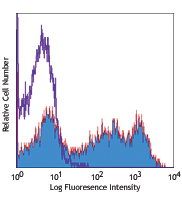
Compare Data Across All Formats
This data display is provided for general comparisons between formats.
Your actual data may vary due to variations in samples, target cells, instruments and their settings, staining conditions, and other factors.
If you need assistance with selecting the best format contact our expert technical support team.
-
PerCP/Cyanine5.5 anti-mouse IgG1
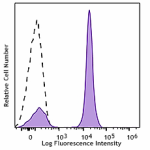
Human peripheral blood lymphocytes were stained with purifie... -
Purified anti-mouse IgG1
-
Biotin anti-mouse IgG1
-
FITC anti-mouse IgG1
-
PE anti-mouse IgG1
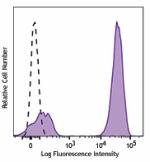
Human peripheral blood lymphocytes were stained with (filled... -
APC anti-mouse IgG1
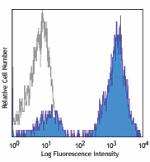
Human peripheral blood lymphocytes were stained with purifie... -
PE/Cyanine7 anti-mouse IgG1
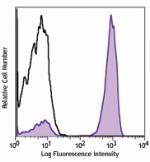
Human peripheral blood lymphocytes were stained with purifie... -
Brilliant Violet 421™ anti-mouse IgG1
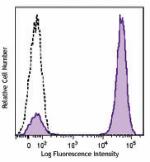
Human peripheral blood lymphocytes were stained with purifie... -
Alexa Fluor® 647 anti-mouse IgG1
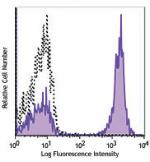
Human peripheral blood lymphocytes were stained with purifie... 
FVB/N mouse frozen thymus section was fixed with 4% paraform... 
IHC staining of Alexa Fluor® 647 anti-mouse IgG1 on formalin... -
APC/Cyanine7 anti-mouse IgG1
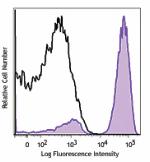
Human peripheral blood lymphocytes were stained with purifie... -
Brilliant Violet 510™ anti-mouse IgG1

Human peripheral blood lymphocytes were stained with purifie... -
Alexa Fluor® 488 anti-mouse IgG1
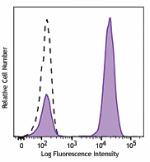
Human peripheral blood lymphocytes were stained with (filled... -
APC/Fire™ 750 anti-mouse IgG1

Human peripheral blood lymphocytes were stained with purifi... -
PE/Dazzle™ 594 anti-mouse IgG1

Human peripheral blood lymphocytes were stained with (filled... -
Brilliant Violet 650™ anti-mouse IgG1
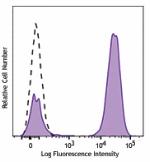
Human peripheral blood lymphocytes were stained with purifie... -
Alexa Fluor® 700 anti-mouse IgG1
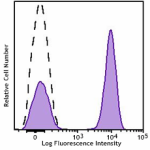
Human peripheral blood lymphocytes were stained with (filled... -
Alexa Fluor® 594 anti-mouse IgG1

Human paraffin-embedded tonsil tissue slices were prepared w... -
TotalSeq™-A1167 anti-mouse IgG1
-
TotalSeq™-C1167 anti-mouse IgG1














Follow Us